Dagstuhl Seminar 23271
Human in the (Process) Mines
( Jul 02 – Jul 07, 2023 )
Permalink
Organizers
- Claudio Di Ciccio (Sapienza University of Rome, IT)
- Silvia Miksch (TU Wien, AT)
- Pnina Soffer (University of Haifa, IL)
- Barbara Weber (Universität St. Gallen, CH)
Contact
- Andreas Dolzmann (for scientific matters)
- Simone Schilke (for administrative matters)
Impacts
- Tiramisù : Making Sense of Multi-Faceted Process Information Through Time and Space - Alman, Anti; Arleo, Alessio; Beerepoot, Iris; Burattin, Andrea; Resinas, Manuel; Ciccio, Claudio Di - ResearchGate, 2024. - 26 pp..
- Timeline-based Process Discovery - Kaur, Harleen; Mendling, Jan; Rubensson, Christoffer; Kampik, Timotheus - Cornell University : arXiv.org, 2023. - 8 pp..
- Multi-perspective path semantics in process miningbased on causal process knowledgearticle in Companion Proceedings of the 16th IFIP WG 8.1 Working Conference on the Practice of Enterprise Modeling and the 13th Enterprise Design and Engineering Working Conference, November 28 – December 1, 2023, Vienna, Austria - Pfahlsberger, Lukas; Rubensson, Christoffer; Knoblich, Steven; Vidgof, Maxim; Mendling, Jan - CEUR-WS.org, 2023. - 15 pp..
- Tiramisù : A Recipe for Visual Sensemaking of Multi-faceted Process Information - Alman, Anti; Arleo, Alessio; Beerepoot, Iris; Burattin, Andrea; Ciccio, Claudio Di; Resinas, Manuel - Berlin : Springer, 2024. - pp. 19-31 - (Lecture notes in business information processing ; 503 : article).
- A Taste of the Different Flavors of Tiramisù : article in ICPM-D 2024, ICPM Doctoral Consortium and Demo Track 2024 - Alman, Anti; Arleo, Alessio; Beerepoot, Iris; Burattin, Andrea; Ciccio, Claudio Di; Resinas, Manuel - Aachen : CEUR, 2024. - 6 pp..
- Visual Analytics Meets Process Mining : Challenges and Opportunities - Miksch, Silvia; Ciccio, Claudio Di; Soffer, Pnina; Weber, Barbara - Los Alamitos : IEEE, 2024. - pp. 132-141 - (IEEE computer graphics ; 44. 2024, 6).
- Timeline-based Process Discovery - Rubensson, Christoffer; Kaur, Harleen; Kampik, Timotheus; Mendling, Jan - Amsterdam : Elsevier, 2025. - 63 pp. - (Information Systems ; 2025, article 102568).
- A task taxonomy for conformance checking - Rehse, Jana-Rebecca; Grohs, Michael; Klessascheck, Finn; Klein, Lisa-Marie; Landesberger, Tatiana von; Pufahl, Luise - Amsterdam : Elsevier, 2026. - 17 pp. - (Information systems ; 136. 2026 : article).
Schedule
- The series of Workshops on Visual Process Analytics. The first instalment, Vipra2024, was held in 2024.
This summary provides an overview of the outcomes of our Dagstuhl Seminar Human in the (Process) Mines. It began with a general introduction to the aim, scope and context of the Dagstuhl Seminar. The preliminary presentation was followed by a sequence of two-minute speeches, with which every participant could give a brief overview of their own background, expertise and personal expectations for the seminar. The seminar participants included experts from both the process mining and visual analytics communities, with industry representatives and researchers in academia at different levels of seniority. The following four talks then set the scene to establish a shared understanding of the two research areas’ core concepts, employed methods and pursued aims: “Process Mining and Visual Analytics: A Story of Twins separated at Birth,” by Jan Mendling; “Visual Analytics for Time-Oriented Data” by Wolfgang Aigner; “The Interaction Side of Visual Analytics” by Christian Tominski; “The Process of Process Mining: Looking into Process Mining through the Lens of Process Analysts,” by Francesca Zerbato. The reader can find the abstracts of those talks in the full report. Thereupon, a plenary brainstorming session began, moderated by the seminar organizers. Every participant in the assembly could suggest a topic that they would like to investigate together with the other attendees. The whole assembly decided how to distill and join the topics together. Figure 1 shows the set of fourteen arguments gathered from the discussion, then merged into eleven points (see the right-top, left-top, and bottom-left quadrants in the figure). To form the working groups, every attendee was asked to write on a card their name and the top two topics they would like to discuss further, in order of priority (see Fig. 1 in the bottom-right corner). The organizers collected the cards and divided the participants into groups of five to six people based on the preferences declared on the cards while keeping the teams heterogeneous in terms of background, research interests and affiliation. To this end, the suggested topics underwent another merging round in order to draw out six key research questions at the intersection of process mining and visual analytics. The questions and the main results that were achieved follow.
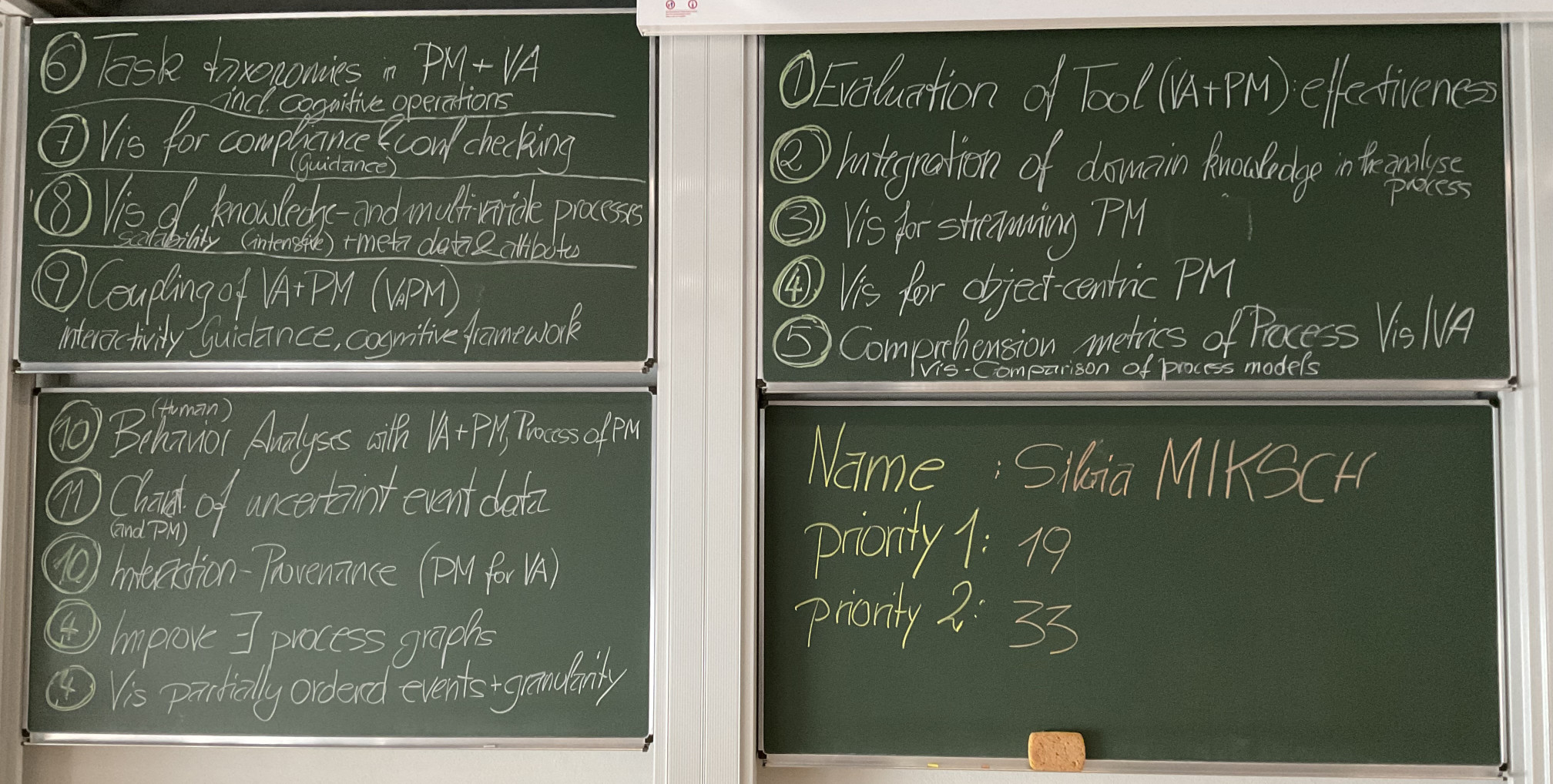
How to incorporate knowledge into an interactive analysis process of event data? Addressing this question resulted in a conceptual model of knowledge-assisted interactive visual process mining, which extends an established model in the area of visual analytics. To validate this model, it has been instantiated for an example process mining task.
How to make sense of multi-faceted process data? This question has guided the development of an interactive framework called "Tiramisú". Based upon the interconnection of multiple visual layers, it displays process information under different perspectives and projects them onto a domain-friendly representation of the context in which the process unfolds. The feasibility of the framework was demonstrated through its application in use-case scenarios. A paper summarizing these results has been submitted to a workshop co-located with the 5th International Conference on Process Mining (ICPM 2023).
What comprehension metrics can be used to evaluate visualizations for process mining tasks? As a starting point for addressing this question, the ICE-T hierarchical evaluation framework was selected to adapt its metrics for the process mining domain. Adapting the methodological approach included the selection of process mining tasks and the use of the ICE-T framework for evaluation. An initial evaluation using the Disco process mining software and the road traffic fine management process data set was performed.
How to select appropriate visualizations for object-centric and multi-dimensional process mining tasks? Addressing this question has focused on investigating and developing a conceptual categorization that facilitates a structured design process of multidimensional visual process mining artefacts grounded in multi-faceted visual analytics design. Existing process mining visualizations have been mapped onto well-established visual analytics facets.
How to design visualizations for the task of conformance checking? This question deals with providing visual support to a major process mining task, of assessing conformance between a process model and the behaviour captured in event data, measuring it, spotting deviations, and analyzing them. Addressing this question, gaps in existing conformance-checking visualizations were analyzed. Then, using a visual analytics workflow, specific application scenarios of conformance checking were analyzed.
How to support human-centred process mining by constructing a unified process mining and visual analytics task taxonomy? Aiming to realize opportunities at the intersection of human-centred process mining activities, the various cognitive aspects of these activities, and visual ways of supporting them, a taxonomical approach was taken. The objective of the proposed taxonomy was to establish a common vocabulary and shared understanding across the three bodies of knowledge, serve as a point of reference, and inform measurements for evaluating process visualizations.
From the second day on, time was mostly devoted to working groups, each discussing one of the research questions that were raised in breakout sessions. This activity was accompanied by “lightning talks”, i.e., brief presentations on issues that emerged during the discussions: “Process mining: A hands-on session” by Anti Alman, “Extended Cognition with Big Data and AI” by Irit Hadar, “How Visual Analytics People Work: Design Study Methodology in Practice” by Tatiana von Landesberger, and “Coping with Volume and Variety in Temporal Event Sequences” by Jan Mendling. Periodic intermediate group presentations reported on the advancement of the teams’ work. The final presentations of the results achieved by the working groups and a discussion of the continuation of the freshly established collaborations took place on the final day. The seminar was concluded with the plan for a follow-up Dagstuhl Seminar, having Pnina Soffer, Katerina Vrotsou, Claudio Di Ciccio, and Christian Tominski as the proponents and prospective organizers. The full report contains the talks held on the first day of the Human in the (Process) Mines Dagstuhl Seminar and the final working group reports
 Claudio Di Ciccio, Silvia Miksch, Pnina Soffer, and Barbara Weber
Claudio Di Ciccio, Silvia Miksch, Pnina Soffer, and Barbara Weber
Process mining (PM) is a body of techniques blending data science concepts with business process management (BPM). It utilizes event data recorded by IT systems that support process execution for a variety of tasks. These include the automated discovery of graphical process models, conformance checking between data and models, enhancement of process models with additional analytic information, run-time monitoring of processes and operational support. Over the years, a large body of research has emerged, and the growing maturity of this discipline has led to an increasing adoption in industry, with a wealth of available tools, and thousands of organizations applying PM.
So far, research efforts in the PM area have primarily focused on algorithms and methods from a technical perspective. Less attention has been paid to supporting PM practitioners throughout the entire PM process. Although the Process Mining Manifesto raised the need to improve the usability of PM already a decade ago, this challenge has been tackled only in part. An important means for supporting human sense-making is through visualization of the analysis processes, the input (event data), and results. Appropriate visualizations can trigger hypotheses, drive additional analysis, reveal patterns, and raise insights. Currently, the vast majority of PM approaches are tied to visual process representations, which are typically anchored in known process modeling notations (e.g., Petri nets, BPMN). As a result, the control-flow of the process (namely, its sequence of activities) is the main view, whereas additional perspectives (e.g., time, resources, rules) are less emphasized in the resulting visualizations.
In contrast, Visual Analytics (VA) applies to any kind of data. Defined as "the science of analytical reasoning facilitated by interactive visual interfaces", VA is a multidisciplinary approach, integrating aspects of data mining and knowledge discovery, information visualization, human-computer interaction, and cognitive science. VA leverages the specific strengths of computers and humans for the best possible outcome: on the one hand, computers are better at managing and processing large amounts of data by exploiting their computational power; on the other hand, humans have better perceptual and cognitive means, which enable them to visually perceive unexpected patterns and to interpret data. As opposed to PM approaches, VA methods are not guided by models whose semantics are well defined. Incorporating such models can form an opportunity for VA.
While these two research disciplines face similar challenges in different contexts, so far there have been few interactions and cross-fertilization efforts between the respective communities. This Dagstuhl Seminar intends to bring together researchers from both communities and foster joint research efforts and collaborations, to advance both fields and enrich future approaches to be developed.
The seminar will deal with topics that are at the intersection of PM and VA, and can potentially contribute to both areas. Discussion topics include, but are not limited to: How can VA methods effectively support sense-making for various PM goals? How can intertwined VA and PM tackle quality and uncertainty over time and space, explore process models and compare them, and utilize principles of guidance and knowledge-assisted VA? Which kinds of visualization and interaction techniques are needed to properly support PM? How can VA solutions scale from single event sequences to multiple event logs? How can cognitive processes involved in PM (e.g., generation of hypotheses) be supported using VA concepts? How to guide the human analyst in determining what kinds of analyses to perform? As a specific outcome, the research challenges at the intersection of PM and VA are intended to be mapped and a research agenda should be derived to exploit the potential for cross-fertilization. As such, the seminar aims to serve as an incubator for sustained collaborations leading to joint scientific efforts and initiatives to attract research funding.
 Claudio Di Ciccio, Silvia Miksch, Pnina Soffer, and Barbara Weber
Claudio Di Ciccio, Silvia Miksch, Pnina Soffer, and Barbara Weber
- Wolfgang Aigner (FH - St. Pölten , AT) [dblp]
- Anti Alman (University of Tartu, EE) [dblp]
- Alessio Arleo (TU Wien, AT) [dblp]
- Iris Beerepoot (Utrecht University, NL) [dblp]
- Axel Buehler (Olympus - Hamburg, DE)
- Andrea Burattin (Technical University of Denmark - Lyngby, DK) [dblp]
- Claudio Di Ciccio (Sapienza University of Rome, IT) [dblp]
- Chiara Di Francescomarino (University of Trento, IT) [dblp]
- Irit Hadar (University of Haifa, IL) [dblp]
- Mieke Jans (Hasselt University, BE) [dblp]
- Philipp Koytek (Celonis Labs GmbH - München, DE) [dblp]
- Monika Malinova Mandelburger (Wirtschaftsuniversität Wien, AT) [dblp]
- Andrea Marrella (Sapienza University of Rome, IT) [dblp]
- Jan Mendling (HU Berlin, DE) [dblp]
- Giovanni Meroni (Technical University of Denmark - Lyngby, DK) [dblp]
- Silvia Miksch (TU Wien, AT) [dblp]
- Luise Pufahl (TU München - Heilbronn, DE) [dblp]
- Jana-Rebecca Rehse (Universität Mannheim, DE) [dblp]
- Manuel Resinas (University of Sevilla, ES) [dblp]
- Shazia Sadiq (University of Queensland - Brisbane, AU) [dblp]
- Daniel Schuster (Fraunhofer FIT - Sankt Augustin, DE) [dblp]
- Pnina Soffer (University of Haifa, IL) [dblp]
- Christian Tominski (Universität Rostock, DE) [dblp]
- Cagatay Turkay (University of Warwick - Coventry, GB) [dblp]
- Stef Van den Elzen (TU Eindhoven, NL) [dblp]
- Sebastiaan Johannes van Zelst (Celonis Labs GmbH - München, DE) [dblp]
- Maria-Cruz Villa-Uriol (University of Sheffield, GB) [dblp]
- Tatiana von Landesberger (Universität Köln, DE) [dblp]
- Katerina Vrotsou (Linköping University, SE) [dblp]
- Barbara Weber (Universität St. Gallen, CH) [dblp]
- Francesca Zerbato (Universität St. Gallen, CH) [dblp]
- Lisa Zimmermann (Universität St. Gallen, CH) [dblp]
Related Seminars
- Dagstuhl Seminar 25152: Multi-Faceted Visual Process Mining and Analytics (2025-04-06 - 2025-04-11) (Details)
Classification
- Artificial Intelligence
- Human-Computer Interaction
- Other Computer Science
Keywords
- Process mining
- human in the loop
- visual analytics

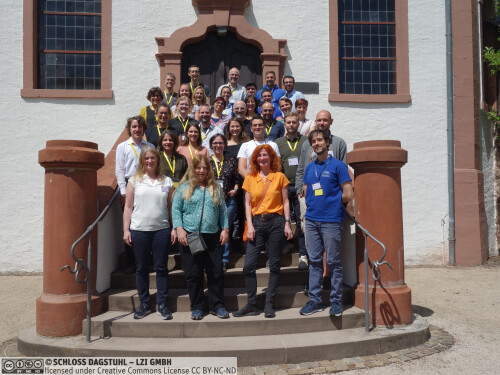
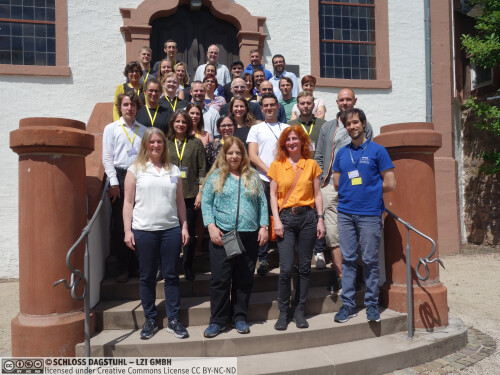
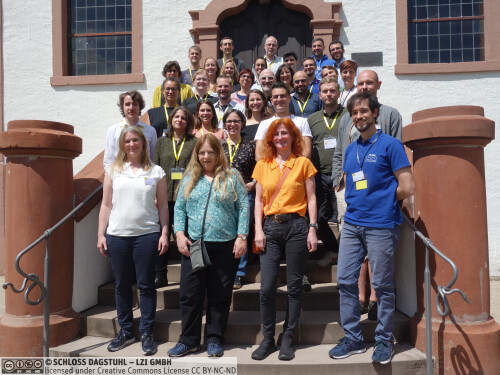
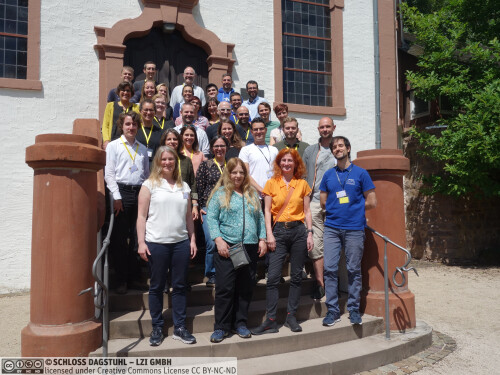
 Creative Commons BY 4.0
Creative Commons BY 4.0
